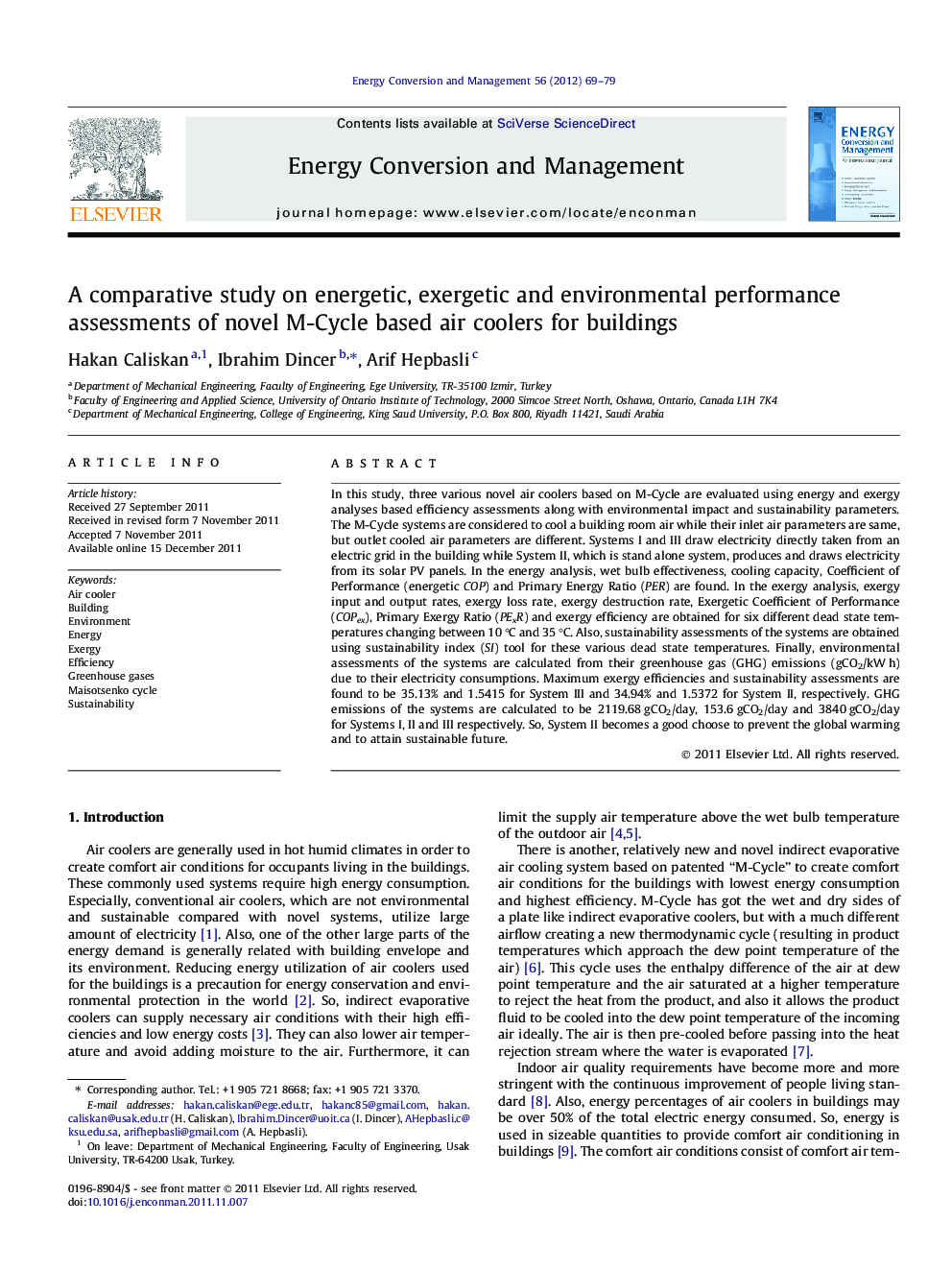| کد مقاله | کد نشریه | سال انتشار | مقاله انگلیسی | نسخه تمام متن |
|---|---|---|---|---|
| 764296 | 1462906 | 2012 | 11 صفحه PDF | دانلود رایگان |

In this study, three various novel air coolers based on M-Cycle are evaluated using energy and exergy analyses based efficiency assessments along with environmental impact and sustainability parameters. The M-Cycle systems are considered to cool a building room air while their inlet air parameters are same, but outlet cooled air parameters are different. Systems I and III draw electricity directly taken from an electric grid in the building while System II, which is stand alone system, produces and draws electricity from its solar PV panels. In the energy analysis, wet bulb effectiveness, cooling capacity, Coefficient of Performance (energetic COP) and Primary Energy Ratio (PER) are found. In the exergy analysis, exergy input and output rates, exergy loss rate, exergy destruction rate, Exergetic Coefficient of Performance (COPex), Primary Exergy Ratio (PExR) and exergy efficiency are obtained for six different dead state temperatures changing between 10 °C and 35 °C. Also, sustainability assessments of the systems are obtained using sustainability index (SI) tool for these various dead state temperatures. Finally, environmental assessments of the systems are calculated from their greenhouse gas (GHG) emissions (gCO2/kW h) due to their electricity consumptions. Maximum exergy efficiencies and sustainability assessments are found to be 35.13% and 1.5415 for System III and 34.94% and 1.5372 for System II, respectively. GHG emissions of the systems are calculated to be 2119.68 gCO2/day, 153.6 gCO2/day and 3840 gCO2/day for Systems I, II and III respectively. So, System II becomes a good choose to prevent the global warming and to attain sustainable future.
► Applying exergy, environment and sustainability analyses to the three (novel M-Cycle based) air coolers.
► Assessing energy and exergy efficiencies, environmental impact and sustainability.
► Proposing System II (using PV-based electricity) as the most environmentally friendly air cooler.
► Proposing System III (using coal-based electricity) as the most efficient air cooler.
Journal: Energy Conversion and Management - Volume 56, April 2012, Pages 69–79